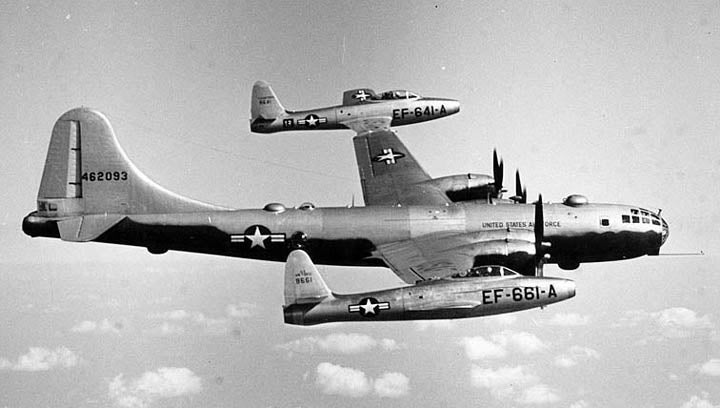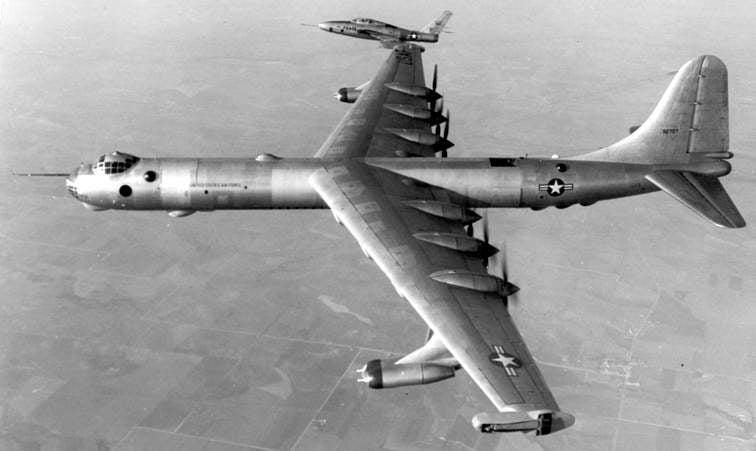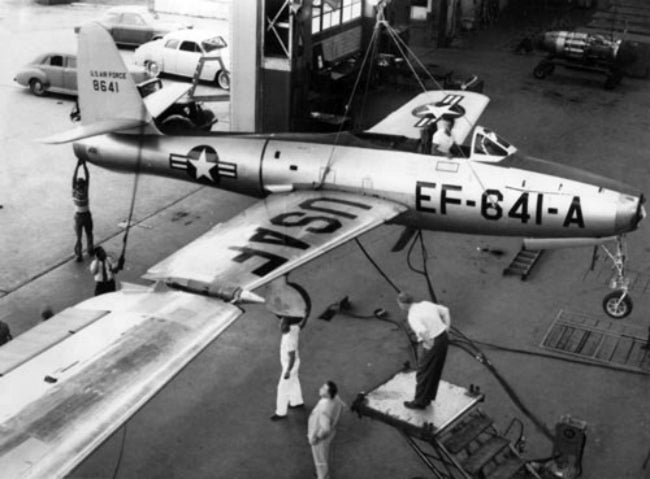 "f86sabre" (f86sabre)
"f86sabre" (f86sabre)
02/20/2014 at 21:20 • Filed to: planelopnik, keep oppo wierd
 3
3
 3
3
 "f86sabre" (f86sabre)
"f86sabre" (f86sabre)
02/20/2014 at 21:20 • Filed to: planelopnik, keep oppo wierd |  3 3
|  3 3 |

During the 1950s there was a desire to maintain fighter protection for piston engined, long range bombers. The early jet fighters of the day didn't have the range to do that, and in flight refueling hadn't been mastered yet, so the engineers had to get creative. One idea was to join the fighters to the wing tips of the bombers. Aerodynamically, the fighter would become an extension of the bombers wing and would increase overall efficiency. Think of a glider wing. The pilots would then shut down the fighter's engines and the planes would be pulled along. This worked reasonably well, but was taxing on the pilots as they had to fight wing tip vortices of the larger aircraft. The Air Force pressed on with the test and asked the fighter maker, Republic, to see if they could develop an automatic control system that could be engaged by the pilots to allow them to get some rest. Unfortunately, the first time they tried to use it the fighter flipped on its back and crashed into the wing of the B-29 killing both crews. Tests of the same concept were also undertaken with a B-36.


http://en.wikipedia.org/wiki/FICON_pro…
 Jayhawk Jake
> f86sabre
Jayhawk Jake
> f86sabre
02/20/2014 at 21:26 |
|
I wrote an article about parasite aircraft, including FICON and it's follow up, Project Tom Tom
http://oppositelock.jalopnik.com/jayhawk-jakes-…
It was an interesting idea, if not fundamentally flawed. I'm glad we figured out aerial refueling...
 No Prius Needed
> f86sabre
No Prius Needed
> f86sabre
02/20/2014 at 21:26 |
|
I remember doing something like this in Kerbal Space Program that ended about as well.
 f86sabre
> Jayhawk Jake
f86sabre
> Jayhawk Jake
02/20/2014 at 21:49 |
|
Good read. Thanks for sharing that.